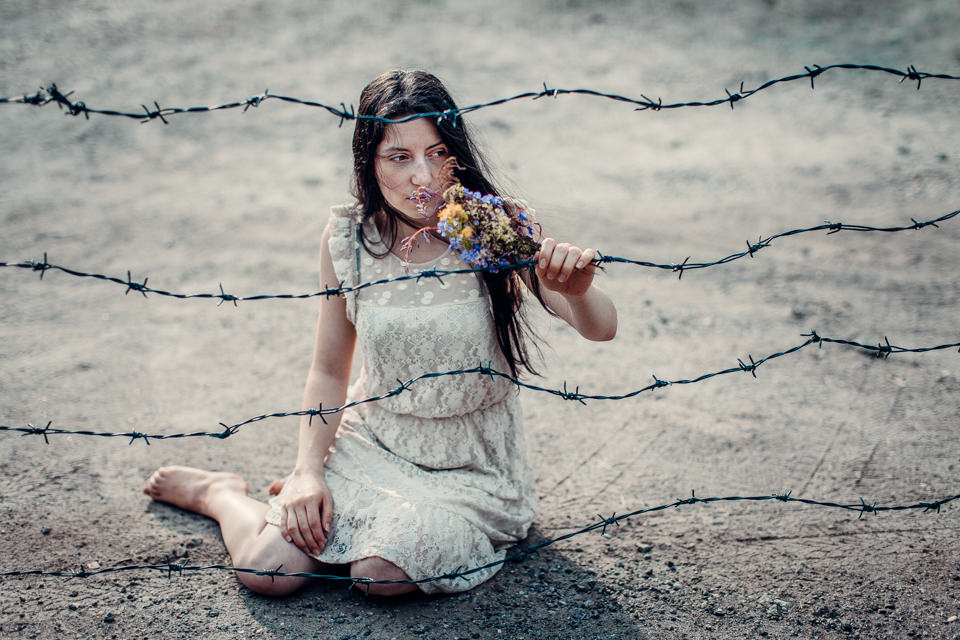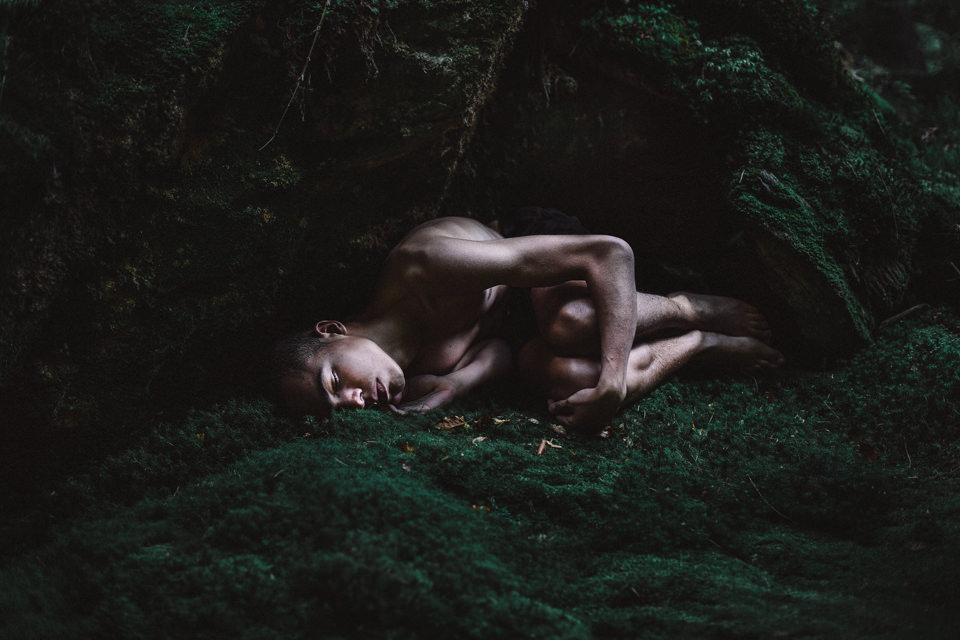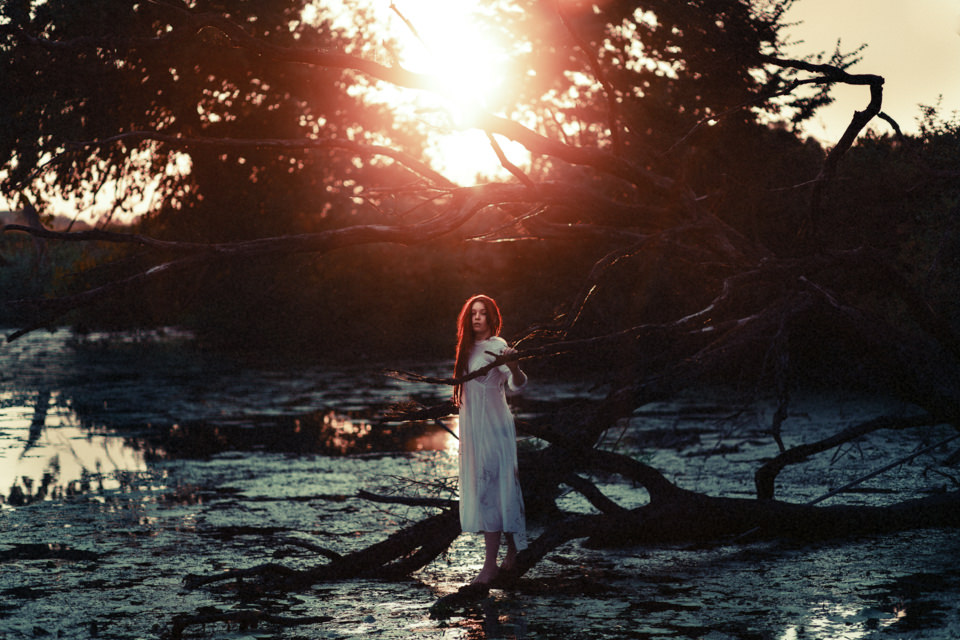Hier bin ich also nun. Sich selbst zu beschreiben ist immer etwas befremdlich. Der Versuch, die eigene, subjektive Perspektive objektiv zugänglich zu machen, muss doch einfach scheitern. Ich glaube, der Versuch, so gesehen zu werden, wie man gesehen werden will, führt ohnehin nur dazu, dass ein Bild entsteht, das nicht der wirklichen Natur entspricht. Eine Inszenierung der eigenen Person.
Und was kann man an Fakten schon ablesen? Es ergibt sich wenig aus meinem Lebenslauf, meinem Zeugnis oder der Frage danach, „wo ich eigentlich herkomme“, beim Anblick meiner Haut- und Haarfarbe. Also lasse ich die Fakten sein, denn ich glaube, man lernt einen Menschen nur durch Auseinandersetzung mit seiner Person wirklich kennen.

Irgendwie bin ich hier gelandet. Kwerfeldein begleitet mich schon, seit ich anfing zu fotografieren. Ich habe das Magazin lieben und schätzen gelernt, es fordert mich heraus, bringt mich zum Staunen und verärgert mich hin und wieder. Es wühlt mich auf. Angesichts der Fülle an großartigen Fotografen und Fotografinnen, die hier zu finden sind, war die Verwunderung groß, als ich gefragt wurde, ob ich für kwerfeldein schreiben wolle. Unsicher lächelnd sagte ich zu, alles weitere würde sich zeigen.

Mein Studium der Sozialen Arbeit, das mich die letzten Jahre umklammerte, liegt in den letzten Zügen. Trotz dieser Umklammerung hielt ich währenddessen an meiner Kamera fest (einmal fiel sie mir auch aus der Hand). Die häufige Frage danach, wie und wann der Weg eines Fotografen mit der Kamera begann, kann ich ehrlich gesagt nicht genau beantworten.
Ich könnte nachschauen, wann ich meine erste Kamera erwarb oder anhand von Archivbildern versuchen, herauszufinden, wann ich die Grenze vom Hobby zur Obsession überschritten habe. Aber wichtig ist es nicht. Ich hörte letztens, jeder Fotograf hätte genau sieben Jahre. Ich weiß nicht, wer das gesagt hat, aber es reicht mir, um mit einem Lächeln im Gesicht nicht weiter darüber nachzudenken.

Ich habe mit der Fotografie angefangen wie vermutlich so gut wie jeder. Mir fiel eine Kamera in die Hände und ich begann, sie zu benutzen. Intuitiv, immer und überall. So ging das eine Weile, bis mir klar wurde, dass ich tatsächlich ernst meinte, was ich da tat. Dabei war mir noch nicht klar, was genau ich eigentlich machen wollte. Auch heute ist mir nicht ganz klar, wohin ich eigentlich möchte.
Aber es zieht mich weiter. Die Richtung, in die es mich zieht, hat, trotz des Willens, in allen Bereichen Fortschritte zu machen, nicht vorrangig mit eigenem Stil oder perfekter Technik zu tun, sondern mit dem Dialog zwischen Künstler und Betrachter. Natürlich ist es ein Ziel, einen eigenen Stil zu finden, aber wie viele Kreise und Schleifen ich auf dem Weg dahin noch drehe, kann ich nicht sagen. Ich denke, ich muss eben diese Kreise und Schleifen schätzen lernen.

Vergangene Woche kam auf einem Festival ein fremder junger Mann im Suff an mir vorbei und meinte: „Deine Bilder haben mich schon mehrmals davor bewahrt, Scheiße zu bauen. Manchmal sehe ich an einem Tag keinen Sinn und dann taucht da ein Bild von Dir auf und ich denke: Ja, das ist es.“ Ob Betrunkene nun eher Unsinn reden oder die Wahrheit sagen, sei dahin gestellt. Ich kannte ihn nicht, weiß nichts von ihm.
Aber für den Fall, dass er diese Zeilen lesen und sich an diese kurze Begegnung erinnern sollte, möchte ich sagen: Ich war in meiner Beziehung zur Fotografie selten dankbarer. Teures Equipment, ein riesiges Netzwerk, Publikationen und lukrative Kundenaufträge sind großartig, ich gönne es jedem und strebe sicherlich auch selbst danach. Aber ich hoffe, diese Ziele immerzu hinter dieses eine Ideal anzustellen:
Das eine Auge des Fotografen schaut weit geöffnet durch den Sucher,
das andere, das geschlossene, blickt in die eigene Seele.
Henri Cartier-Bresson –
Die Schönheit der Dinge lebt in der Seele dessen, der sie betrachtet.
David Hume –

Hier stehe ich also gerade. Ich fotografiere Menschen, Emotionen, erzähle Geschichten und beschreibe, was ich sehe. Ich inszeniere, manchmal dokumentiere ich, manchmal lasse ich Geschichten erzählen. Ich sehne mich nach Abenteuer, nach so vielem, was in meinem Alltag schwer erreichbar erscheint.
Auf meine Bilder bezogen bedeutet das: Orte, die mich faszinieren, Menschen, die weit weg erscheinen, Geschichten, die nicht nur inszeniert, sondern gelebt werden wollen. Wie das aussehen soll, ist mir nicht klar. Vielleicht sollte ich meine Frau auf eine Weltreise schleppen, mit einem Koffer voll Kamerakram. Am besten unsere ganze kleine Kommune mit allen Mitbewohnern samt Hühnern.

Ich habe kürzlich meine Bachelorarbeit abgegeben. Ein Begriff darin, der mich nachhaltig geprägt hat, ist die „Realutopie“. Im Gegensatz zum umgangssprachlichen Verständnis der Utopie, unter der eine scheinbar unerreichbare Vision verstanden wird, meint die Realutopie ein erreichbares Ziel, das noch nicht erreicht ist, die zielführenden Wege sind aber sichtbar. Realutopien dieser Art wünsche ich jedem, in Kunst, Alltag und Gesellschaft.

Ich will versuchen, bei kwerfeldein ein Stück dieser kreativen Reise ins Ungewisse mit Menschen gemeinsam zu gehen, die ebenfalls von der Kamera ins Ungewisse gezogen werden. Von denen lernen, die ihre Richtung kennen und schon einige Umwege gegangen sind und Kreise gedreht haben. Ich möchte neue Perspektiven zeigen, inspirieren und inspiriert werden.

Welch eine himmlische Empfindung ist es, seinem Herzen zu folgen.
Johann Wolfgang von Goethe –
Es ist erstaunlich, welch ungeahnte Dinge geschehen, wenn man sich einer Sache voller Leidenschaft hingibt. Ich bin sehr dankbar dafür, hier sein zu dürfen. Dankbar für jeden, der hier liest und schreibt. Ich durfte schon viel von Euch allen lernen und habe noch viel mehr vor mir.

kwerfeldein – Fotografie Magazin | Fotocommunity





























You must be logged in to post a comment.